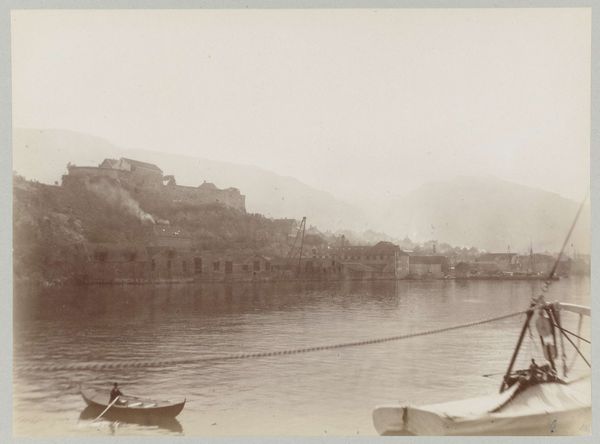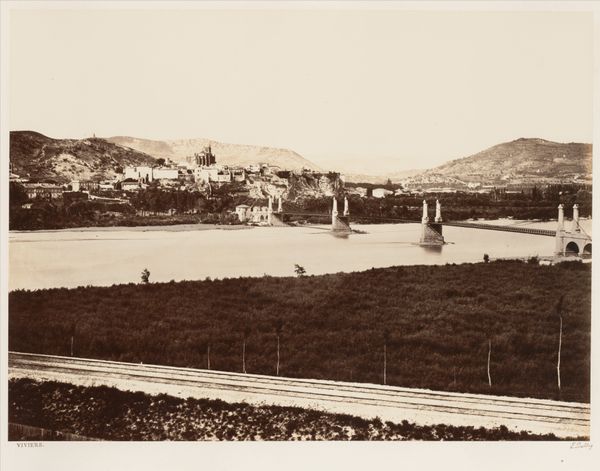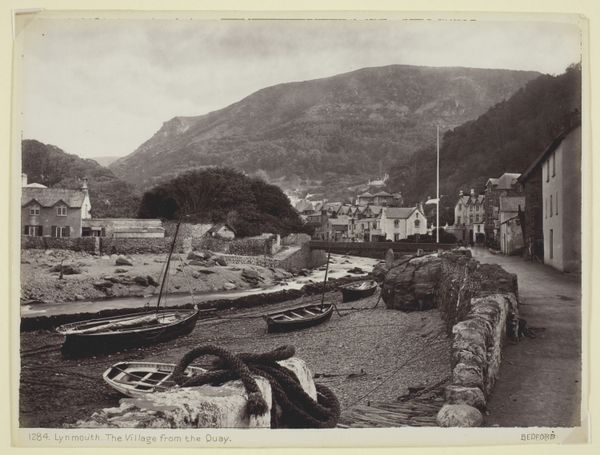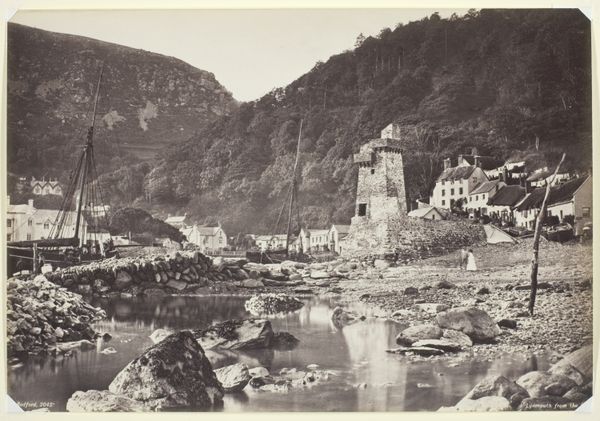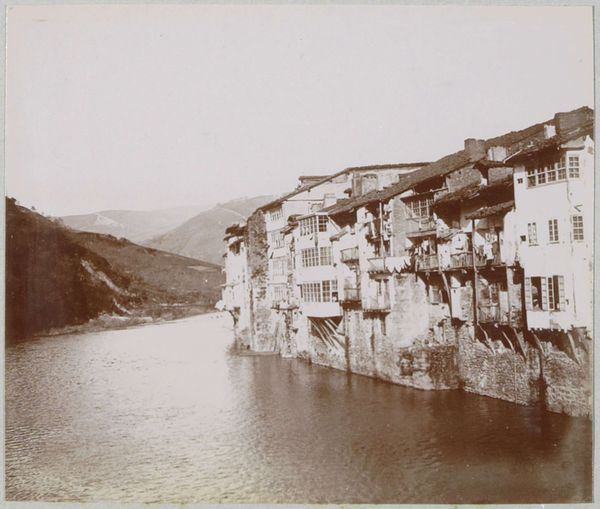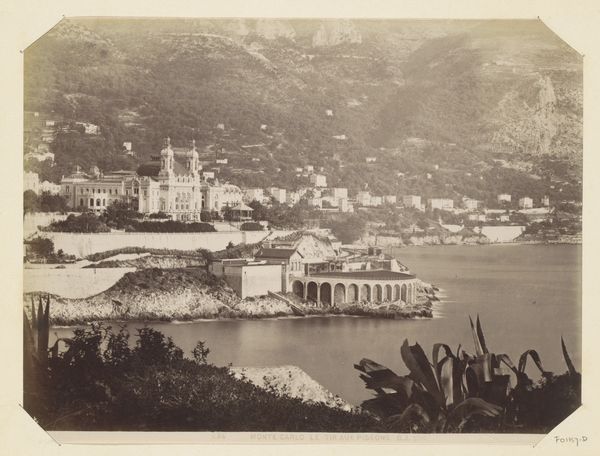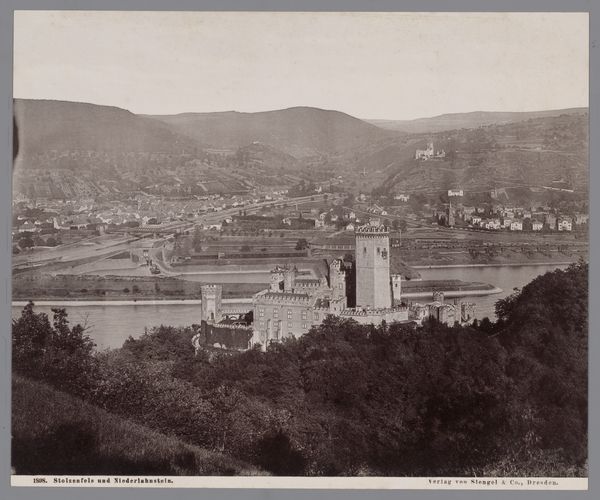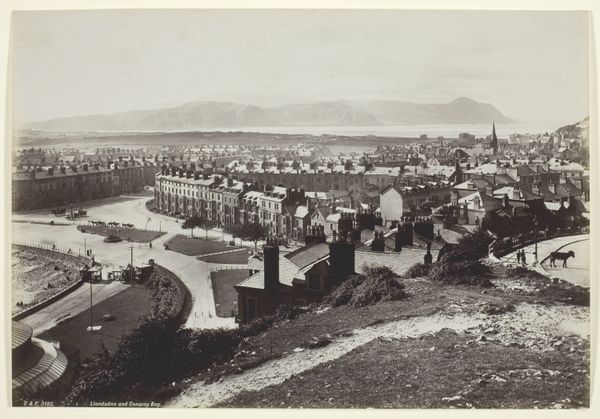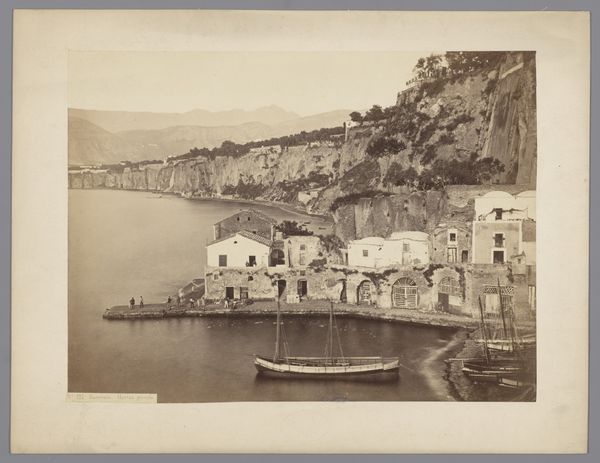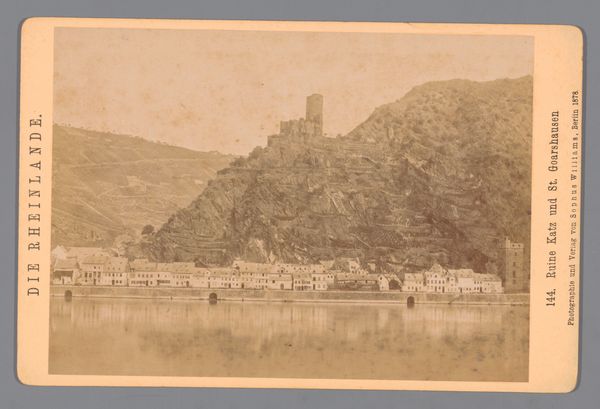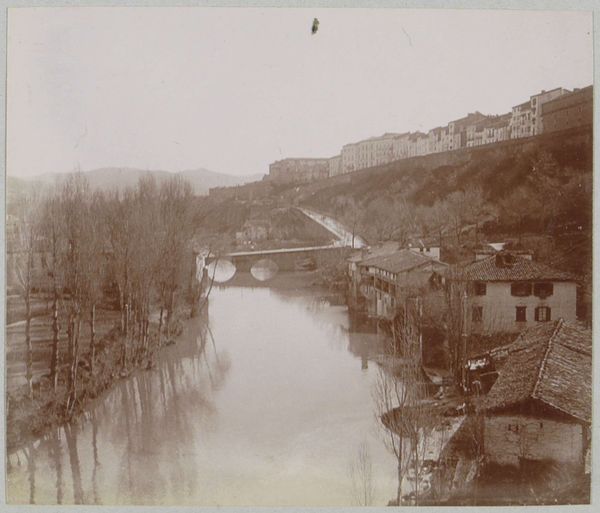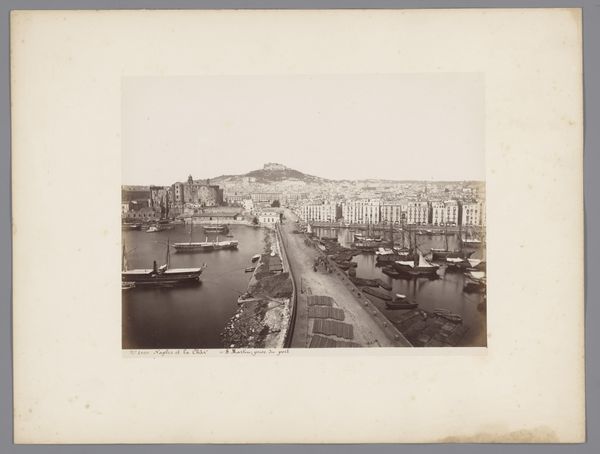
Dimensions: 16.1 × 21.1 cm (image/paper)
Copyright: Public Domain
Curator: Looking at Francis Bedford's "Barmouth, the Quay and Ty Gwyn," likely created between 1860 and 1894, a sense of tranquility washes over me. There’s something profoundly still about it, despite the activity suggested by the boats and figures. Editor: Stillness, perhaps, but also a deep insight into the labouring body of the mid-19th century, shaped by burgeoning seaside economies. Notice how the architecture literally shores up against the wild, mountainous landscape. Curator: It's a fascinating juxtaposition! Bedford's choice of the albumen silver printing process adds to the effect, I think. That sepia tone lends such a palpable sense of history, emphasizing the craftsmanship behind its creation. The tones must have been produced through painstaking development by darkroom technicians using elaborate chemistry. Editor: Precisely. And look at the figures—those are men working the Quay. These are not idle vacationers we see now, but members of an essential labor class and how that labor interacts with commerce in this Welsh port town is not often considered with photography of this period. Bedford's compositions provide insight into a segment of British culture on the margins. Curator: Considering the social dynamics in play alongside Bedford's clear expertise behind the lens, do you think this work, exhibited here at The Art Institute of Chicago, straddles the line between documentary and aestheticized vision? Editor: Absolutely. The artistry is undeniable, particularly his subtle use of light reflecting on the water and the structures—but consider this photo through a post-colonial lens: is this a romantic view or rather a study in British industrial ambition in the provinces, particularly regarding labor hierarchies and port economies during a peak period of imperialism? Curator: So we can see within this image a romantic, beautiful image. Yet, the artist is also subtly chronicling economic factors that altered labor and reshaped cultural views, thanks to improved chemical and photographic technologies. Editor: That said, such technologies did change production to where workers of all social strata found the medium financially accessible, enabling some economic enfranchisement as the 19th century drew to a close. This shot demonstrates photography's democratization but acknowledges social stratification. Curator: Looking at this photograph now, I see those layers. It’s not just a pretty landscape; it’s a carefully constructed narrative of place and the industrial machine as it marched on at the time, altering economies and societal demographics. Editor: Precisely, and to view photographs such as these only through lenses that prioritize composition would be to neglect a world in historical images begging for social insight.
Comments
No comments
Be the first to comment and join the conversation on the ultimate creative platform.
